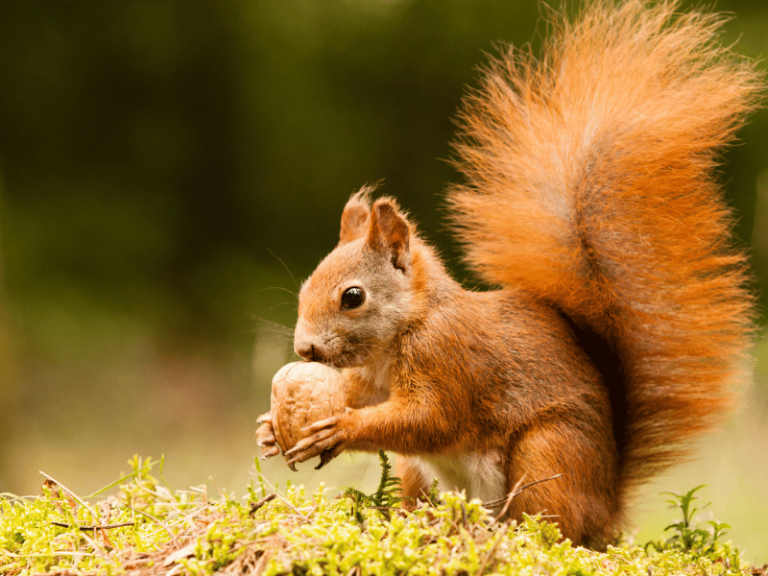Squirrels running and jumping on tree trunks, spinning around, climbing up and down — how fascinating it is!
Sometimes, when a mother squirrel sees her young in danger, she anxiously shakes her tail, hopping along the tree, making a chirping sound. In severe cold, squirrels hastily finish eating outside, then return to their nests. They cover their heads with their fluffy tails, tightly curling up into a ball, like a thick quilt.
Squirrels have strong hind legs and are adept at jumping. They not only run around on trees but also leap from one branch to another, balancing their bodies skillfully between branches and jumping into the air. This agility owes much to their large tails! Therefore, within the squirrel family living in trees, species like Eurasian red squirrels, grey squirrels, rock squirrels, red-bellied squirrels, and large dark squirrels all have large tails.
However, having a large tail is not exclusive to squirrels. Squirrels also have some “cousins,” such as groundhogs and yellow ground squirrels, which are ground-dwelling and do not need such balance in jumping, hence their tails are not as prominent. This further underscores the special role of the large tail for squirrels living in trees.

